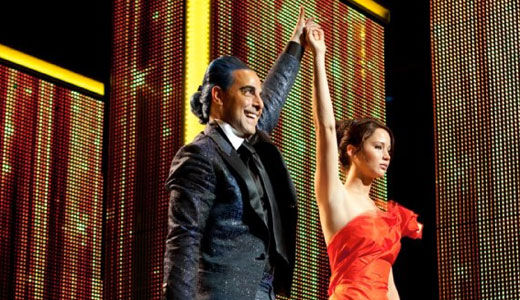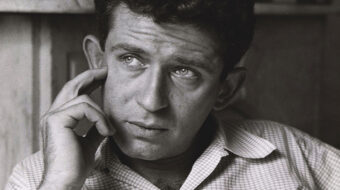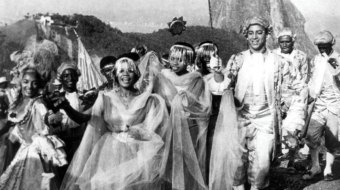
The Hunger Games, released just over a week ago, turned out to be a surprising delight.
Upon first glance, The Hunger Games seems not to hold much promise for the non-teen viewer. It is based upon a series of books aimed at a teen or pre-teen audience, and, unlike the Harry Potter series, it wasn’t until after the film came to dominate the box office that the adult world took notice of the story.
Also, the first previews of the movies seemed to show it as a pointless American rehash of the Japanese cult favorite Battle Royale. In games, teens from around “the districts” are taken, two from each area, to compete in a strange competition staged for a sadistic population. The teens, 24 in all, fight to the death, until only one remains standing. This one is the victor.
In that Battle Royale, which spawned its own sequels, junior high students from graduating classes are taken to compete in yet another fight to the death, one man – actually, boy or girl – standing, all for the benefit of yet another sadistic population. American remakes are generally far worse than their Asian geneses: one enjoys Korea’s My Sassy Girl but endures the American version, at least until they tear their hair and leave the theater.
What, then, is the point going to see The Hunger Games?
For starters, there is Jennifer Lawrence. I’m sure that many of the adults who first went to see Harry Potter unencumbered by their children went for the sole purpose of seeing Alan Rickman. The same should hold true for Lawrence, who is an astounding young actress. Lawrence made a stunning debut in Winter’s Bone in which she played, Ree, a daughter hunting through a dangerous backwoods to find her criminal meth addict of a father.
She so brilliantly portrayed the girl that it was somewhat surprising to see her as in Hunger Games as Katniss, the still rural but altogether more genteel girl fighting to save her loved ones from destruction in the games.
Anyone who came to see Lawrence was surely not let down. She is perhaps the most promising new young actress in years, and shows that once again in Hunger Games.
But Games turned out to be far different than Battle Royale with a different actress. First, Games is part of a longer series of books, and, one would guess, films, with a plotline that goes far beyond that of the first story. Second and perhaps more importantly, the current film’s portrayal of a worldview is entirely different than the Japanese.
Battle Royale was, if anything, a nihilistic view of human society. It envisioned a dystopian future in which there was no hope for human salvation, aside from a few characters here and there. Japan had simply degenerated, and the government had passed the Battle Royale Act, a way to discipline and get rid of the young generation. While the main characters were sympathetic, human tenderness seemed to be alien to the world in which the film took place, the film itself seemingly made only for the sado-voyeuristic pleasure audiences display at their most base.
The Hunger Games, however, are part of a larger story of oppression and rebellion. Katniss and her fellow players are abducted from “The Districts” by “The Capitol” as ongoing punishment for a rebellion that took place years ago. The games take place for the pleasure of the Capitol viewing audience, but also, in a Machiavellian way, to keep the Districts subjugated. Instead of simply brutalizing the districts, which number twelve, they are set against each other in violent competition — divide and rule. Victory is allowed for one person, but, as imperial President Coriolanus Snow says, this necessary because a little bit of hope dished out by the rulers — not too much, though! — is more powerful in oppression than brutality dished out alone.
The Districts themselves could be any ruled nation or colony. Shot in colors reminiscent of Nazi death camp scenes in other movies, they could be the Warsaw ghettos. They could be South Africa’s “Bantustans,” or they could Homs or anywhere a brutal state maims and kills its own or other people.
Katniss is different than previous competitors in that she is able to maintain a series of friendships and build up a friendly solidarity with Rue, a black citizen of another district (her color has caused a small minded racist controversy among some on Twitter; too bad, as the point seems to be solidarity across borders and color lines).
Undoubtedly, much of the plot line is trite; the filmmakers did not leave out the romance between the main plot characters typical of all such films, for example. Still, there is something worth watching here for adults, most notably the stellar performance turned in by the up-and-coming Lawrence (or perhaps she’s already arrived), as well as enjoyable performances by Woody Harrelson and Lenny Kravitz (!). For the younger set, positive messages and an entertaining storyline, enhanced by strong direction from Gary Ross.
Movie Review
The Hunger Games
Directed by Gary Ross
Starring Jennifer Lawrence and Stanley Tucci
2012, 142 mins, Rated PG-13












Comments